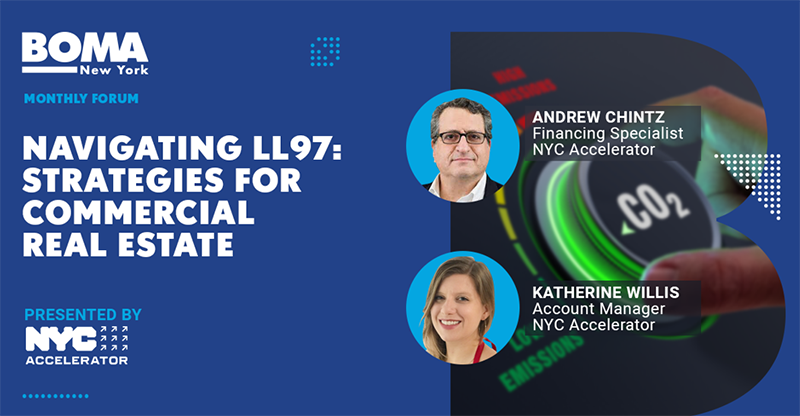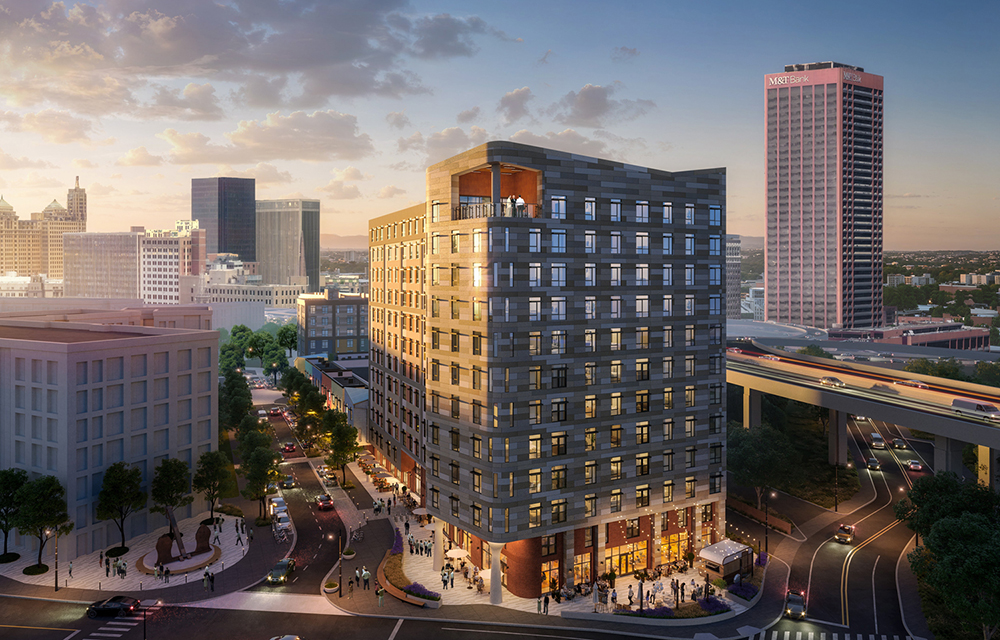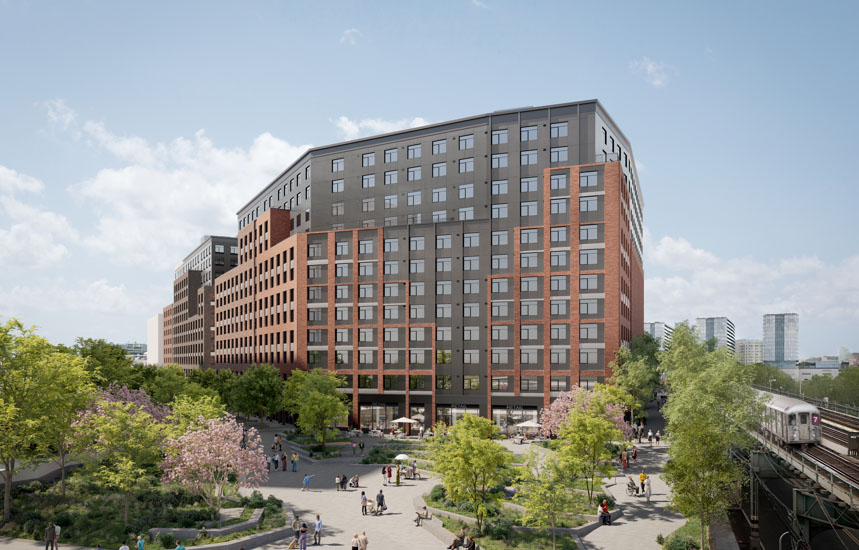BOMA New York Forum Navigating Local Law 97: Strategies for commercial real estate

Manhattan, NY The Climate Mobilization Act (CMA) is the largest climate solution of any city in the world. Its centerpiece, Local Law 97 of 2019, requires that all New York City buildings larger than 25,000 s/f meet carbon reduction targets beginning this year, or face fines for non-compliance.
At BOMA New York’s online April Forum, experts from the New York City Accelerator, a city-sponsored, free technical assistance program, mapped out a pathway to decarbonization.
Account manager Katherine Willis and finance specialist Andrew Chintz explained how owners can develop a scalable, “whole building” approach to net-zero emission goals.
Willis opened with a description of the city’s current emissions situation. She said, “Sixty-eight percent of New York City’s emissions come from buildings, and 90% of the city’s buildings will still be here in 2050.”
Willis stated that the NYC Accelerator program offers free, personalized assistance to identify appropriate building upgrade projects and meet emission limits under the CMA. Free services also include more than 40 training courses and the ability to connect building decision-makers directly with energy efficiency service providers.
She said, “Once you are assigned an account manager, we will collect data including benchmarking for utility use and occupancy type. We’ll review energy efficiency letter grades, analyze the data, and define a Local Law 97 compliance pathway.”
The next step, according to Willis, is for building decision-makers to select and implement projects that may include energy efficiency upgrades and solar installations. NYC Accelerator staff will then offer help with the compliance process and identifying financial support to offset the costs of retrofits.
Willis also highlighted deadlines occurring in 2024. Local Law 88 mandates the fulfillment of building lighting standards and sub-metering requirements for buildings larger than 25,000 s/f by year-end. Likewise, Local Law 84 requires the posting of Energy Star letter grades in a building’s public space by October 31st, with a $1,250 fine for non-compliance.
For buildings larger than 50,000 s/f, the City’s Greener, Greater Buildings Plan adds more ambitious targets. For buildings in that category, Willis cited Local Law 87 which requires an energy audit by a registered design professional and retro-commissioning every 10 years. An energy audit focuses on measures that, if implemented, will save energy and money over the long term. Many of these measures involve purchasing and installing new capital equipment.
Retro-commissioning focuses on how the existing equipment is controlled. Retro-commissioning measures are mostly repairing, recalibrating, and reprogramming controls and control devices such as temperature sensors.
Under Local Law 97, the first emissions limitations will be applied annually from 2024 to 2029. On an optimistic note, Willis reported that at present, 89% of buildings have been projected to meet these goals.
In his presentation, Chintz said that a personal account manager at NYC Accelerator will work hand-in-hand with a financing specialist, like himself. He said, “We approach financing options as a net cost after applying (existing) incentives.” NYC Accelerator will identify applicable programs relevant to project needs and fit them to building use and financial situation. He said that no two buildings are exactly alike, “like snowflakes.” Then, staff will connect owners with lenders who specialize in financing emissions projects.
The key determinant is a property’s mortgage life cycle. Chintz said that most buildings are in the middle stages of their life cycle. He added, “We will consider financing energy retrofits via a new mortgage loan if the existing mortgage matures in one to two years. Or we will recommend a supplemental mortgage.”
Chintz said that local ‘green banks’ and green mortgage lenders look to underwrite energy improvements as a means to lower rates. Other options include equipment loans and leases, and non-debt financing solutions. The latter would include energy service and power purchase agreements “as a service.”
Chintz recommended PACE (Property Assessed Clean Energy), financing to assist owners in meeting compliance requirements. He said, “PACE loans are repaid as a line item on your property tax bill.” Chintz emphasized that reduced operating expenses from energy savings help offset loan repayments.
In the final portion of the forum, Willis addressed an attendee’s question: Would an office building containing a large data center with tremendous energy usage requirements be considered as the same type of a similar-sized office building? She said that carbon emissions limits consider different types of uses. She said, “Rules are (continuously) being revised.” At the start, there were only a handful of building use types under the law. Today there are 50 to 60 different types.” The NYC Department of Buildings can provide further clarification on current compliance rules pertaining to Local Law 97.
In conclusion, both presenters were highly optimistic about building owners’ collective commitment to achieving the Climate Mobilization Act’s lofty and essential goals.
Join BOMA New York in-person at Club 101 on April 30th for its annual Energy Action Day, where Anthony Malkin, chairman & CEO of Empire State Realty Trust, will deliver the keynote address at a morning industry event called “The CRE Pathway to Net Zero.”
Habitat, Duvernay + Brooks and Buffalo Municipal Housing close on 254-unit first phase redev. of Marine Drive Apts.


The CRE content gap: Why owners and brokers need better digital narratives in 2026 - by Kimberly Zar Bloorian








.gif)

.gif)
.jpg)
.gif)